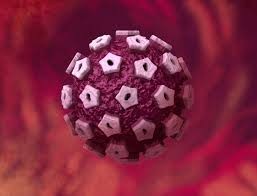Actually, I didn’t know much about human Papilloma Virus until recently when my mentor asked me in an Ebola Virus Retreat “what are some of the causes of cervical cancer” and I had no idea about that. He said among them “Human Papilloma Virus and take note of that and research on it”. Well from then I had to do research on the deadly virus which not only cause cervical cancer but many other cancers.
Human Papilloma Virus (HPV) is a group of viruses that are extremely common worldwide; there are more than 100 types of HPV, of which at least 13 are cancer-causing (also known as high risk type). HPV is mainly transmitted through sexual contact and most people are infected with HPV shortly after the onset of sexual activity. Cervical cancer is caused by sexually acquired infection with certain types of HPV. Two HPV types cause 70% of cervical cancers and precancerous cervical lesions. HPV also causes cancers of the anus, vulva, vagina and penis. Cervical cancer is the second most common cancer in women living in less developed regions. Human Papilloma virus (HPV) is the most common viral infection of the reproductive tract.
Cervical cancer is an uncommon type of cancer that develops in a woman’s cervix. The cervix is the entrance to the womb from the vagina.
Transmission;
The peak time for acquiring infection for both women and men is shortly after becoming sexually active. HPV is sexually transmitted, but penetrative sex is not required for transmission. Skin-to-skin genital contact is a well-recognized mode of transmission. There are many types of HPV, and many do not cause problems. HPV infections usually clear up without any intervention within a few months after acquisition, and about 90% clear within 2 years. A small proportion of infections with certain types of HPV can persist and progress to cancer. Cervical cancer is by far the most common HPV-related disease. Nearly all cases of cervical cancer can be attributable to HPV infection.
Signs and symptoms;
The majority of HPV infections do not cause symptoms or disease and resolve spontaneously. However, persistent infection with specific types of HPV may lead to precancerous lesions. If untreated, these lesions may progress to cervical cancer, but this progression usually takes many years. Symptoms of cervical cancer tend to appear only after the cancer has reached an advanced stage and may include:
- Irregular, intermenstrual (between periods) or abnormal vaginal bleeding after sexual intercourse
- Back, leg or pelvic pain, fatigue (tiredness)
- Weight loss
- Loss of appetite
- Vaginal discomfort or odourous discharge, and a single swollen leg.
More severe symptoms may arise at advanced stages. It takes 15 to 20 years for cervical cancer to develop in women with normal immune systems. It can take only 5 to 10 years in women with weakened immune systems, such as those with untreated HIV infection.
Risk Factors of Cervical Cancer;
- Early first sexual intercourse
- Having multiple sexual partners
- Tobacco use
- Immune suppression (low immune system)
- Birth control pills
- Treatment of cervical cancer depends on: The stage of the cancer, the size and shape of the tumor, the woman’s age and general health and her desire to have children in the future
- Early cervical cancer can be cured by removing or destroying the precancerous or cancerous tissue. There are surgical ways to do this without removing the uterus or damaging the cervix, so that a woman can still have children in the future.
- There are currently 2 vaccines which protect against both HPV 16 and 18, which are known to cause at least 70% of cervical cancers. The vaccines may also have some cross-protection against other less common HPV types which cause cervical cancer.
- I conclude by encouraging all young women to please go for check up against cervical cancer.
Treatment and Prevention;
- Treatment of cervical cancer depends on: The stage of the cancer, the size and shape of the tumor, the woman’s age and general health and her desire to have children in the future
- Early cervical cancer can be cured by removing or destroying the precancerous or cancerous tissue. There are surgical ways to do this without removing the uterus or damaging the cervix, so that a woman can still have children in the future.
- There are currently 2 vaccines which protect against both HPV 16 and 18, which are known to cause at least 70% of cervical cancers. The vaccines may also have some cross-protection against other less common HPV types which cause cervical cancer.
- I conclude by encouraging all young women to please go for check up against cervical cancer.
Asmau Ahmad is a young female microbiologist and leaves in Kano, Nigeria. She can be reached via asmeee@yahoo.com





